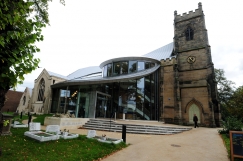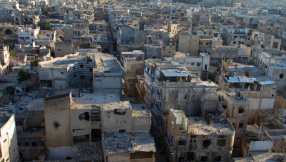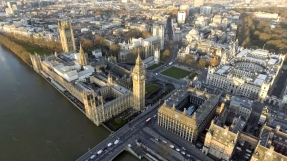
Nearly 900 of England's most historic churches are in danger of falling into ruin, according to English Heritage.
The conservation body issued its new Heritage at Risk list today and identified 887 listed places of worship whose fabric is decaying – about six per cent of the total on its register. It is the first time it has undertaken such a comprehensive assessment of church buildings.
Among the problems facing congregations struggling to maintain ancient buildings are low morale, theft and even attack by woodpeckers – but ancient buildings are still an asset to a congregation, not a liability, according to a spokeswoman.
The reasons for their decay include dwindling congregations, financial troubles and metal theft which leaves roofs open to water pouring through – and at St Michael, Knighton on Teme, leaks caused by woodpeckers drawn to the cedar shingles on the bell turret and spire.
However, Diana Evans, English Heritage's head of places of worship advice, told Christian Today: "What's exciting is how many congregations realise that the building is an asset they can use as a base for their work. It astonishes me how many creative and inventive ways they find to engage with people who aren't regular worshippers. They provide resources for the whole community and so many are doing fantastic work with very vulnerable people."
One example is in Camden, where the Victorian church of St Mary Magdalene operates right at the heart of the local community, offering space for local community groups and a cold weather shelter for the homeless in winter months, as well playing host to concerts and recitals. It is now at risk as leaks in the roof threaten its rich interior including marbles and frescoes.
Evans said far more listed churches were at risk than listed secular buildings but acknowledged that "Christian groups are not preservation societies – they are caring for these buildings in order to use them. But they are conserving them on behalf of the nation, in a very sacrificial way."

She added that theft and vandalism could be a major problem, especially in remoter areas where churches were not visited every day. "It is a challenge to morale. People run coffee mornings and gift days to replace the boiler and then find someone's stolen the lead from the roof and the money has to go on that instead.
"We have huge compassion for these situations."
Evans said: "Being on the 'at risk' register is not an accusation of failure. It's an indication that there is a building of national significance and the cost of maintaining it is way beyond the church's resources. It's a call for focused help, not a finger-pointing exercise."
She said that it was unrealistic to expect more government help in the current economic climate, but that it was important that churches used the funding sources that were already available, such as the Heritage Lottery Fund. Many churches were still failing to reclaim VAT on repairs, she said, making them much more expensive than they needed to be.















